Portal topics - (Random portal)
The Hotels Portal


A hotel is an establishment that provides paid lodging on a short-term basis. Facilities provided inside a hotel room may range from a modest-quality mattress in a small room to large suites with bigger, higher-quality beds, a dresser, a refrigerator, and other kitchen facilities, upholstered chairs, a television, and en-suite bathrooms. Small, lower-priced hotels may offer only the most basic guest services and facilities. Larger, higher-priced hotels may provide additional guest facilities such as a swimming pool, a business center with computers, printers, and other office equipment, childcare, conference and event facilities, tennis or basketball courts, gymnasium, restaurants, day spa, and social function services. Hotel rooms are usually numbered (or named in some smaller hotels and B&Bs) to allow guests to identify their room. Some boutique, high-end hotels have custom decorated rooms. Some hotels offer meals as part of a room and board arrangement. In Japan, capsule hotels provide a tiny room suitable only for sleeping and shared bathroom facilities.
Hotel operations vary in size, function, complexity, and cost. Most hotels and major hospitality companies have set industry standards to classify hotel types. An upscale full-service hotel facility offers luxury amenities, full-service accommodations, an on-site restaurant, and the highest level of personalized service, such as a concierge, room service, and clothes-ironing staff. Full-service hotels often contain upscale full-service facilities with many full-service accommodations, an on-site full-service restaurant, and a variety of on-site amenities. Boutique hotels are smaller independent, non-branded hotels that often contain upscale facilities. Small to medium-sized hotel establishments offer a limited amount of on-site amenities. Economy hotels are small to medium-sized hotel establishments that offer basic accommodations with little to no services. Extended stay hotels are small to medium-sized hotels that offer longer-term full-service accommodations compared to a traditional hotel. (Full article...)
Recognized articles - load new batch
-
Image 1
The Hilton Washington DC National Mall The Wharf, previously known as the L'Enfant Plaza Hotel, is a 367-room hotel located on the top four floors of a 12-story mixed-use building in downtown Washington, D.C., in the United States. It was designed by architect Vlastimil Koubek, and was opened on May 31, 1973, as the Loews L'Enfant Plaza Hotel, named after Pierre Charles L'Enfant, the first surveyor and designer of the street layout of the city.
The hotel sits atop L'Enfant Plaza, an esplanade and plaza structure erected above a highway and a parking garage in the Southwest quadrant of the District of Columbia. The plaza and hotel were approved in 1955, but construction did not begin on the plaza (on which the hotel sits) until 1965. The plaza and esplanade were completed in 1968. The start of construction on the hotel was delayed three years, and was completed in May 1973. The construction led to a lawsuit after it was found that the foundation of an adjoining structure had encroached on the hotel's property. The hotel suffered a serious fire in 1975 that claimed the lives of two people. (Full article...) -
Image 2
The Brinks Hotel in Saigon, also known as the Brink Bachelor Officers Quarters (BOQ), was bombed by the Vietcong on the evening of 24 December 1964, during the Vietnam War. Two Vietcong operatives detonated a car bomb underneath the hotel, which housed United States Army officers. The explosion killed two Americans, an officer and an NCO, and injured approximately 60, including military personnel and Vietnamese civilians.
The Vietcong commanders had planned the venture with two objectives in mind. Firstly, by attacking an American installation in the center of the heavily guarded capital, the Vietcong intended to demonstrate their ability to strike in South Vietnam should the United States decide to launch air raids against North Vietnam. Secondly, the bombing would demonstrate to the South Vietnamese that the Americans were vulnerable and could not be relied upon for protection. (Full article...) -
Image 3The Hotel Polen fire occurred on 9 May 1977 in Amsterdam, the Netherlands. The conflagration destroyed the Hotel Polen (Hotel Poland), a five-story hotel in the centre of the city which had been built in 1891, as well as the furniture store on the ground level and a nearby bookstore. Many of the tourists staying at the hotel (of whom the majority were Swedes) jumped to their deaths trying to escape the flames. Upon their arrival, the fire department used a life net to help people escape, but not everyone could be saved. The incident resulted in 33 deaths and 21 severe injuries. The cause of the fire is unknown. In 1986, the Polish-born artist Ania Bien created a photographic installation based on the fire which compared it to the Holocaust.
The hotel was located between the Kalverstraat (no. 15–17) and the Rokin (no. 14), near the present day Madame Tussauds. Its place is now occupied by the Rokin Plaza, originally an office building, which today houses several fashion shops. (Full article...) -
Image 4
The Royal Albion Hotel (originally the Albion Hotel) is a 3-star hotel, on the corner of Old Steine and Kings Road in Brighton, England. Built on the site of a house belonging to Richard Russell, a local doctor whose advocacy of sea-bathing and seawater drinking helped to make Brighton fashionable in the 18th century, it has been extended several times, although it experienced a period of rundown and closure in the early 20th century. A fire in 1998 caused serious damage, and the hotel was restored. However, another fire in 2023 seriously damaged the building to the extent that demolition of the western part of the building began on 19 July 2023.
The Classical-style building has three parts of different sizes and dates but similar appearances. Large pilasters and columns of various orders feature prominently. Amon Henry Wilds, an important and prolific local architect, took the original commission on behalf of promoter John Colbatch. Another local entrepreneur, Harry Preston, restored the hotel to its former high status after buying it in poor condition. The building took on its present three-wing form in 1963. The original part of the building was listed at Grade II* by English Heritage for its architectural and historical importance, and its western extension is listed separately at the lower Grade II. (Full article...) -
Image 5Sauganash Hotel, c. 1830–33 (the smaller building on the left was Chicago's first drug store)
Sauganash Hotel (originally Eagle Exchange Tavern) was a hotel regarded as the first hotel in Chicago, Illinois. Built in 1831, the hotel was located at Wolf Point in the present-day Loop community area at the intersection of the north, south and main branches of the Chicago River. The location at West Lake Street and North Wacker Drive (formerly Market Street) was designated a Chicago Landmark on November 6, 2002. The hotel has changed proprietors often in its twenty-year existence and briefly served as Chicago's first theater. It was named after Sauganash, an interpreter in the British Indian Department. (Full article...) -
Image 6
The Ryugyong Hotel (Korean: 류경호텔; sometimes spelled as Ryu-Gyong Hotel), or Yu-Kyung Hotel, is a 330 m (1,080 ft) tall unfinished pyramid-shaped skyscraper in Pyongyang, North Korea. Its name (lit. "capital of willows") is also one of the historical names for Pyongyang. The building has been planned as a mixed-use development, which would include a hotel.
Construction began in 1987 but was halted in 1992 as North Korea entered a period of economic crisis after the dissolution of the Soviet Union. After 1992, the building stood topped out, but without any windows or interior fittings. In 2008, construction resumed, and the exterior was completed in 2011. The hotel was planned to open in 2012, the centenary of founding leader Kim Il Sung's birth. A partial opening was announced for 2013, but this was cancelled. In 2018, an LED display was fitted to one side, which is used to show propaganda animations and film scenes. (Full article...) -
Image 7
John Plankinton (March 11, 1820 – March 29, 1891) was an American businessman. He is noted for expansive real estate developments in Milwaukee, including the luxurious Plankinton House Hotel designed as an upscale residence for the wealthy. He was involved with railroading and banking. The Plankinton Bank he developed became the leading bank of Milwaukee in his lifetime. He was involved in the development of the Milwaukee City Railroad Company, an electric railway.
Plankinton was a Milwaukee-based meatpacking industrialist. He started this trade as a butcher for his general store operating in the center part of the city. He was the city's leading meat packer after his first year in the grocery business. He expanded this industry and eventually became acquainted with the meatpacking industrialist Philip D. Armour forming a company with him that lasted for 20 years. (Full article...) -
Image 8

Sir William Heygate Edmund Colborne Butlin MBE (29 September 1899 – 12 June 1980) was an entrepreneur whose name is synonymous with the British holiday camp. Although holiday camps such as Warner's existed in one form or another before Butlin opened his first in 1936, it was Butlin who turned holiday camps into a multimillion-pound industry and an important aspect of British culture.
Born in Cape Town, South Africa, to William and Bertha Butlin, Butlin had a turbulent childhood. His parents separated before he was seven, and he moved to England with his mother. He spent the next five years following his grandmother's family fair around the country where his mother sold gingerbread, exposing the young Butlin to the skills of commerce and entertainment. When he was twelve his mother emigrated to Canada, leaving him in the care of his aunt for two years. Once settled in Toronto, his mother invited him to join her there. (Full article...) -
Image 9

The George Hotel, Crawley
The George Hotel, also known as the George Inn and now marketed as the Ramada Crawley Gatwick, is a hotel and former coaching inn on the High Street in Crawley, a town and borough in West Sussex, England. The George was one of the country's most famous and successful coaching inns, and the most important in Sussex, because of its location halfway between the capital city, London, and the fashionable seaside resort of Brighton. Cited as "Crawley's most celebrated building", it has Grade II* listed status.
It is known that a building called the George has existed on the site since the 16th century or earlier, and many sources date the core of the existing inn to 1615. The George Hotel has three principal sections, facing east and running from south to north parallel with Crawley High Street. Nothing of the exterior is original, except perhaps for parts of the tiled roof. The hotel contains 84 rooms and 6 meeting rooms with a capacity of up to 150, regularly used for conferences, weddings, exhibitions, seminars and training sessions. The present structure is made up of disparate parts of various dates: the inn expanded to take in adjacent buildings as its success grew in the 18th and 19th centuries. Major changes took place in the 1930s, and the annex was knocked down in 1933. (Full article...) -
Image 10
The Landmark was a hotel and casino located in Winchester, Nevada, east of the Las Vegas Strip and across from the Las Vegas Convention Center. Frank Caroll, the project's original owner, purchased the property in 1961. Fremont Construction began work on the tower that September, while Caroll opened the adjacent Landmark Plaza shopping center and Landmark Apartments by the end of the year. The tower's completion was expected for early 1963, but because of a lack of financing, construction was stopped in 1962, with the resort approximately 80 percent complete. Up to 1969, the topped-off tower was the tallest building in Nevada until the completion of the International Hotel across the street.
In 1966, the Central Teamsters Pension Fund provided a $5.5 million construction loan to finish the project, with ownership transferred to a group of investors that included Caroll and his wife. The Landmark's completion and opening was delayed several more times. In April 1968, Caroll withdrew his request for a gaming license after he was charged with assault and battery against the project's interior designer. The Landmark was put up for sale that month. (Full article...) -
Image 11

Richard D'Oyly Carte
Richard D'Oyly Carte (; 3 May 1844 – 3 April 1901) was an English talent agent, theatrical impresario, composer, and hotelier during the latter half of the Victorian era. He built two of London's theatres and a hotel empire, while also establishing an opera company that ran continuously for over a hundred years and a management agency representing some of the most important artists of the day.
Carte started his career working for his father, Richard Carte, in the music publishing and musical instrument manufacturing business. As a young man he conducted and composed music, but he soon turned to promoting the entertainment careers of others through his management agency. Carte believed that a school of wholesome, well-crafted, family-friendly, English comic opera could be as popular as the risqué French works dominating the London musical stage in the 1870s. To that end he brought together the dramatist W. S. Gilbert and composer Arthur Sullivan and nurtured their collaboration on a series of thirteen Savoy operas. He founded the D'Oyly Carte Opera Company and built the state-of-the-art Savoy Theatre to host the Gilbert and Sullivan operas. (Full article...) -
Image 12One of the bomb-damaged coaches at the Mahim station in Mumbai during the 11 July 2006 train bombings
The 2008 Mumbai attacks (also referred to as 26/11 attacks) were a series of coordinated Islamist terrorist attacks that took place in November 2008, when 10 members of Lashkar-e-Taiba, a Pakistan-based Islamist militant organisation, carried out 12 shooting and bombing attacks lasting four days across Mumbai. The attacks, which drew widespread global condemnation, began on Wednesday, 26 November, and lasted until Saturday, 29 November 2008. A total of 175 people died, including nine of the attackers, with more than 300 injured.
Eight of the attacks occurred in South Mumbai at Chhatrapati Shivaji Maharaj Terminus, the Oberoi Trident, the Taj Mahal Palace and Tower hotel, the Leopold Cafe, the Cama Hospital, the Nariman House, the Metro Cinema, and in a lane behind the Times of India building and St. Xavier's College. Also, an explosion occurred at Mazagaon, in Mumbai's port area, and in a taxi at Vile Parle. By the early morning of 28 November, all sites except for the Taj Hotel had been secured by the Mumbai Police and security forces. On 29 November, India's National Security Guards conducted Operation Black Tornado to flush out the remaining attackers; it culminated in the death of the last remaining attackers at the Taj Hotel and ended the attacks. (Full article...) -
Image 13Façade of Watson's hotel, now known as the Esplanade Mansion
Watson's Hotel (actually Watson's Esplanade Hotel), now known as the Esplanade Mansion, located in the Kala Ghoda area of Mumbai (Bombay), is India's oldest surviving cast iron building. It is probably the oldest surviving multi-level fully cast-iron framed building in the world, being three years earlier than the Menier Chocolate Factory in Noisiel, France, which are both amongst the few ever built. Named after its original owner, John Watson, the cast and wrought iron structure of the building was prefabricated in England, and it was constructed between 1867 and 1869.
The hotel was leased on 26 August 1867 for the terms of 999 years at yearly rent of Rupees 92 and 12 annas to Abdul Haq. It was closed in the 1960s and was later subdivided and partitioned into smaller cubicles that were let out on rent as homes and offices. Neglect of the building has resulted in decay and, despite its listing as a Grade II–A heritage structure, the building is now in a dilapidated state. A documentary film about the building was made in 2019 called The Watson's Hotel. (Full article...) -
Image 14

The Millennium Times Square New York (formerly the Hotel Macklowe and the Millennium Broadway) is a hotel at 133 and 145 West 44th Street, between Times Square and Sixth Avenue, in the Theater District of Midtown Manhattan in New York City. Operated by Millennium & Copthorne Hotels, the hotel has 750 guest units, as well as a conference center with 33 conference rooms. The hotel incorporates a Broadway theater called the Hudson Theatre into its base.
The hotel is composed of two guestroom towers flanking the Hudson Theatre. The original 48-story tower west of the theater was designed by William Derman and Perkins & Will, while the 22-story annex east of the theater was designed by Stonehill & Taylor. The original hotel tower contains a lobby with a passageway connecting two entrances on 44th and 45th Streets. In addition, there is a bar, restaurant, and fitness center in the original tower. The conference center in the lower stories extended into the Hudson Theatre, which in 2017 became a Broadway theater. The 22-story annex is branded as the Millennium Premier New York Times Square. (Full article...) -
Image 15
The New York Marriott Marquis is a Marriott hotel on Times Square, in the Theater District of Midtown Manhattan in New York City. Designed by architect John C. Portman Jr., the hotel is at 1535 Broadway, between 45th and 46th Streets. It has 1,971 rooms and 101,000 sq ft (9,400 m2) of meeting space.
The hotel has two wings, one on 45th Street and one on 46th Street, connected by a podium at ground level. The first two stories contain retail space, while the Marquis Theatre was built within the building's third floor. The hotel's atrium lobby is at the eighth floor and also includes meeting space and restaurants. Thirty-six stories of guestrooms rise above the lobby, overlooking it. The top three stories contain The View, one of New York City's highest restaurants and revolves for a 360° view of the city. An architectural feature of the hotel is its concrete elevator core, which consists of a minaret-shaped structure with twelve glass elevator cabs on the exterior. (Full article...)
General images - show new batch
-
Image 3The Peninsula New York hotel, located at the corner of Fifth Avenue and 55th Street in Midtown Manhattan (from Hotel)
-
Image 7The Boody House Hotel in Toledo, Ohio (from Hotel)
-
Image 8The 4 Seasons Motel sign in Wisconsin Dells, Wisconsin is an excellent example of googie architecture. (from Motel)
-
Image 9Dutchmaid Motel, 10 miles north of Lancaster, Pennsylvania (from Motel)
-
Image 10Sign on Chicago motel (from Motel)
-
Image 12Ithaa, the first undersea restaurant at the Conrad Maldives Rangali Island resort (from Hotel)
-
Image 13Tremont House in Boston, United States, a luxury hotel, the first to provide indoor plumbing (from Hotel)
-
Image 14An apartment hotel in Hammond, Indiana (from Apartment hotel)
-
Image 17Burj Al Arab stands on an artificial island from Jumeirah Beach and is connected to the mainland by a private curving bridge (from Hotel)
-
Image 18The Star Lite Motel in Dilworth, Minnesota is a typical American 1950s L-shaped motel. (from Motel)
-
Image 19On top of the cliff, the Riosol Hotel in Mogán (from Hotel)
-
Image 20The Harrison Hotel, an SRO hotel in Oakland, California. (from Apartment hotel)
-
Image 22The Waldorf Astoria New York, the most expensive hotel ever sold, cost US$1.95 billion in 2014. (from Hotel)
-
Image 24Wigwam Motel No. 6, a unique motel/motor court on historic Route 66 in Holbrook, Arizona (from Motel)
-
Image 27A typical hotel room with a bed, desk, and television (from Hotel)
-
Image 30Motels frequently have large pools, such as the Thunderbird Motel on the Columbia River in Portland, Oregon (1973). (from Motel)
-
Image 34Ice Hotel in Jukkasjärvi, Sweden (from Hotel)
-
Image 35Abandoned Grand West Courts in Chicago, demolished in September 2013 (from Motel)
In the news
- 28 March 2025 – Russian invasion of Ukraine
- A Russian drone attack on Dnipro, Ukraine, kills four people and wounds 19 others. Multiple buildings in the city are reported to be ablaze, including a hotel, resort, a restaurant complex and numerous apartments. (Reuters)
- 15 March 2025 –
- Indonesian lawmakers meet at a Central Jakarta luxury hotel instead of the legislature amidst budget cuts, allegedly to secretly discuss on military law revisions that would bring back dwifungsi, a doctrine allowing military personnel to hold civilian positions. Civil activists try to stop the meeting but are hindered by hotel security. (Kompas) (TEMPO)
- 12 March 2025 – Somali Civil War
- 2025 Beledweyne hotel attack
- Somali security forces end the 24-hour siege at a hotel in Beledweyne, Hiran, Somalia, with at least fifteen civilians and all six Al-Shabaab attackers killed. (BBC News) (AP)
- 11 March 2025 – Somali civil war
- 2025 Beledweyne hotel attack
- At least ten people are killed after five Al-Shabaab militants detonate a car bomb and attack a hotel in Beledweyne, Hiran, Somalia. (BBC News) (First Post)
Selected articles - load new batch
-
Image 1Hotel Hell is an American reality television series created, hosted and narrated by Gordon Ramsay, which ran on the Fox network for three seasons from 2012 to 2016. It aired on Monday nights at 8 pm ET/PT. It was Ramsay's fourth series for the Fox network.
The series features Ramsay visiting various struggling lodging establishments throughout the United States in an attempt to reverse their misfortunes, following a similar concept established in Ramsay's other programs Ramsay's Kitchen Nightmares and its American counterpart Kitchen Nightmares. (Full article...) -
Image 2
The El Dorado (also spelled the Eldorado) is a cooperative apartment building at 300 Central Park West, between 90th and 91st Streets adjacent to Central Park, on the Upper West Side of Manhattan in New York City. It was constructed from 1929 to 1931 and was designed by architect of record Margon & Holder and consulting architect Emery Roth in the Art Deco style. The El Dorado consists of twin 12-story towers rising from a 17-story base. The building is a contributing property to the Central Park West Historic District, a National Register of Historic Places–listed district, and is a New York City designated landmark.
The base contains several small setbacks, and two towers rise from the eastern side of the base. On Central Park West, the first three stories are clad in cast stone, and the main entrance consists of three angular bronze archways. The remainder of the facade is made of tan and brown brick, which are arranged to emphasize the vertical lines of the facade. Some of the upper-story apartments contain angular stone balconies, and the tops of the towers are ornamented with sculpted finials. When the El Dorado opened, it contained 200 apartments with 1,500 rooms, though some apartments have since been split or combined. The main lobby is decorated in marble, and a gym in the building's two basement levels was added in the 1990s.
The El Dorado replaced a pair of apartments that were built in 1902 and also known as the El Dorado. The current apartment complex was constructed from 1929 to 1931 by developer Louis Klosk, who was unable to complete the building after the Wall Street Crash of 1929. The Central Park Plaza Corporation bought the El Dorado at a foreclosure auction in 1931. The corporation was taken over by the Pick Hotels Corporation in 1943, then by Hugh K. McGovern in January 1953. The building was then sold in May 1953 to pastor Charles M. "Daddy" Grace, whose estate sold the building in 1960 to Alexander Gross. The El Dorado became a housing cooperative in July 1982, and several parts of the building were upgraded, despite disagreement among tenants. (Full article...) -
Image 3
The Pearl of Africa Hotel is a hotel in Kampala, the capital and largest city of Uganda. The building, under development since 2006, was completed in June 2017, and was opened on 1 October 2017. (Full article...) -
Image 4The Anantara Siam Bangkok Hotel is a luxury hotel located in the Ratchadamri area in the Pathum Wan District of central Bangkok. Formerly known as the Four Seasons Bangkok, it is situated opposite the Royal Bangkok Sports Club. The hotel is part of the Anantara Hotels & Resorts brand under Minor Hotels. (Full article...)
-
Image 5
The Mayflower Hotel is a historic hotel in downtown Washington, D.C., located on Connecticut Avenue NW. It is two blocks north of Farragut Square and one block north of the Farragut North Metro station. The hotel is managed by Autograph Collection Hotels, a division of Marriott International.
The Mayflower is the largest luxury hotel in Washington, D.C., the longest continuously operating hotel in the Washington metropolitan area, and a rival of the nearby Willard InterContinental Washington and Hay–Adams Hotels.
The Mayflower has been called the "Grande Dame of Washington" and the "Hotel of Presidents", President Harry S. Truman, a frequent guest of the hotel, called the Mayflower Hotel the city's "Second Best Address" after the White House. It was also a charter member of Historic Hotels of America, the official program of the National Trust for Historic Preservation. It ranked a four-star hotel. (Full article...) -
Image 6
The New Yorker Hotel is a mixed-use hotel building at 481 Eighth Avenue in the Hell's Kitchen neighborhood of Manhattan in New York City. Opened in 1930, the New Yorker Hotel was designed by Sugarman and Berger in the Art Deco style and is 42 stories high, with four basement stories. The hotel building is owned by the Unification Church, which rents out the lower stories as offices and dormitories. The upper stories comprise The New Yorker, A Wyndham Hotel, which has 1,083 guestrooms and is operated by Wyndham Hotels & Resorts. The 1-million-square-foot (93,000-square-meter) building also contains two restaurants and approximately 33,000 square feet (3,100 m2) of conference space.
The facade is largely made of brick and terracotta, with Indiana limestone on the lower stories. There are setbacks to comply with the 1916 Zoning Resolution, as well as a large sign with the hotel's name. The hotel contains a power plant and boiler room on its fourth basement, which was an early example of a cogeneration plant. The public rooms on the lower stories included a Manufacturers Trust bank branch, a double-height lobby, and multiple ballrooms and restaurants. Originally, the hotel had 2,503 guestrooms from the fourth story up. The modern-day hotel rooms start above the 19th story.
The New Yorker was built by Mack Kanner and was originally operated by Ralph Hitz, who died in 1940 and was succeeded by Frank L. Andrews. Hilton Hotels bought the hotel in 1954 and, after conducting extensive renovations, sold the hotel in 1956 to Massaglia Hotels. New York Towers Inc. acquired the New Yorker in 1959 but surrendered the property to Hilton in 1967 as part of a foreclosure proceeding. The hotel was closed in 1972 and sold to the French and Polyclinic Medical School and Health Center, which unsuccessfully attempted to develop a hospital there. The Unification Church purchased the building in 1976 and initially used it as a global headquarters. After the top stories of the building reopened as a hotel in 1994, the lower stories were used as offices and dormitories. The hotel rooms have undergone multiple renovations since the hotel reopened. The New Yorker joined the Ramada chain in 2000 and was transferred to the Wyndham brand in 2014. (Full article...) -
Image 7
The Wigwam Motels, also known as the "Wigwam Villages", is a motel chain in the United States built during the 1930s and 1940s. The rooms are built in the form of tipis, mistakenly referred to as wigwams. It originally had seven different locations: two locations in Kentucky and one each in Alabama, Florida, Arizona, Louisiana, and California.
They are very distinctive historic landmarks. Two of the three surviving motels are located on historic U.S. Route 66: in Holbrook, Arizona, and in San Bernardino, California. All three of the surviving motels are listed on the National Register of Historic Places: the Wigwam Motel in Cave City, Kentucky, was listed in 1988 under the official designation of Wigwam Village #2; the Wigwam Motel in Arizona was listed as Wigwam Village #6 in 2002; and the Wigwam Motel in California was listed in 2012 as Wigwam Village #7. (Full article...) -
Image 8The Best Exotic Marigold Hotel is a 2011 British comedy-drama film directed by John Madden. The screenplay, written by Ol Parker, is based on the 2004 novel These Foolish Things by novelist Deborah Moggach, and features an ensemble cast consisting of Dev Patel, Judi Dench, Celia Imrie, Bill Nighy, Ronald Pickup, Maggie Smith, Tom Wilkinson, and Penelope Wilton, as a group of British pensioners moving to a retirement hotel in India, run by the young and eager Sonny, played by Patel. The film was produced by Participant Media and Blueprint Pictures on a budget of $10 million.
Producers Graham Broadbent and Peter Czernin first saw the potential for a film in Deborah Moggach's novel with the idea of exploring the lives of the elderly beyond what one would expect of their age group. With the assistance of screenwriter Ol Parker, they came up with a script in which they take the older characters completely out of their element and involve them in a romantic comedy.
Principal photography began on 10 October 2010 in India, and most of the filming took place in the Indian state of Rajasthan, including the cities of Jaipur and Udaipur. Ravla Khempur, an equestrian hotel which was originally the palace of a tribal chieftain in the village of Khempur, was chosen as the site for the film hotel. (Full article...) -
Image 9
The International Hotel was a hotel located in Virginia City, Nevada. The hotel initially opened as a wooden one-story building in 1860. Two years later, a three-story brick addition was added to the hotel. The wooden portion was dismantled in 1863, and was used to construct a new International Hotel in Austin, Nevada, where it remained operational as of 2014. A four-story brick addition took the place of the wooden building.
The International Hotel burned down in the "Great Fire of 1875". A new International Hotel began construction the following year, and opened with 160 rooms on March 31, 1877. At six stories, the hotel was the tallest building in Nevada until a fire destroyed it in December 1914. The site of the former hotel became a parking lot. (Full article...) -
Image 10Jurys Inn was a hotel group founded and headquartered in Ireland with operations across Ireland, the UK and the Czech Republic. It was founded in 1993 and grew to operate 31 hotels in the Great Britain, six in Ireland and one in the Czech Republic, with some 7,500 rooms between them, served by 4,000 employees.
Jurys Inn became a member of the Leonardo Hotels Group, a wholly-owned subsidiary of Fattal Hotels, which operates more than 160 hotels in 16 countries. Fattal ran the operating platform for all the Jurys Inn hotels, as well as having the leaseholds for 15 of these. In 2022, it was announced that all Jurys Inn hotels in the UK and Ireland were to be rebranded as Leonardo hotels. Jurys Inn was also part-owned by the Swedish company Pandox AB, a European hotel property investor with 122 hotels in 11 countries, including the freehold of 20 Jurys Inn hotels. (Full article...) -
Image 11

The Le Bristol Hotel Beirut was a famous 5-star luxury hotel located in the Verdun neighborhood of Beirut, Lebanon. It opened in 1951 and was famous for both its architecture and guests it hosted. The hotel closed permanently in 2020. (Full article...) -
Image 12The International Luxury Hotel Association (ILHA) is a nonprofit organization whose purpose is unifying and advancing the luxury hospitality industry. The association is the luxury hotel industry's influencer that reaches hotel and travel professionals through its media channels and publications. It brings together industry experts and thought leaders to answer the greatest challenges facing the luxury hotel business today. (Full article...)
-
Image 13
The Old Cataract Aswan Hotel, commonly known as the Old Cataract Hotel, is a historic British colonial-era hotel located on the banks of the River Nile in Aswan, Egypt. It was built in 1899 by Thomas Cook and opened under the name Cataract Hotel. In 1961 the hotel was expanded with the addition of a new tower wing, operating as the budget wing of the hotel. From 2008 to 2011 the hotel was closed and underwent a complete restoration, reopening in October 2011 as the Sofitel Legend Old Cataract Aswan Hotel. (Full article...) -
Image 14Uta Felgner is a German businesswoman. By the end of 2006 she was becoming known as the most high-profile hotel manager in the country. She was the manager of Berlin's luxurious Castle Hotel ("Schlosshotel") in Grunewald during June/July 2006 when all the hotel's 42 rooms and 12 suites were taken over to accommodate the Germany national team while it participated in the 2006 FIFA World Cup. Other well known guests of the hotel while she was its manager had by that time already included Woody Allen, Roman Polanski, Henry Kissinger Vitali Klitschko, Uwe Seeler, the King of Spain and the Sultan of Brunei.
She hit the headlines three years later in November 2009 after journalists working for the Berliner Morgenpost (newspaper) revealed that during the 1980s she had operated as an unusually active Informal collaborator in the German Democratic Republic (East Germany), working for the country's Ministry for State Security (Stasi / intelligence services). The starting point for the journalists' researches had been an originally secret file on Felgner held in preserved Stasi records, comprising approximately 3,000 pages. (Full article...) -
Image 15
The New York Biltmore Hotel was a luxury hotel at 335 Madison Avenue in Midtown Manhattan, New York City. The hotel was developed by the New York Central Railroad and the New York, New Haven and Hartford Railroad and operated from 1913 to 1981. It was one of several large hotels developed around Grand Central Terminal as part of Terminal City. The Biltmore was designed in the Italian Renaissance Revival style by Warren and Wetmore, one of the firms involved in designing Grand Central. Although the hotel's steel frame still exists, the hotel itself was almost entirely demolished and replaced by an office building in the early 1980s.
The hotel building was variously cited as having between 23 and 26 stories. The hotel had a facade of granite, limestone, brick, and terracotta. Most of its floor plan was U-shaped, with a light court facing west toward Madison Avenue. In the basement was a reception room that led directly from Grand Central Terminal. The public dining rooms, including the Palm Court and main dining room, were at ground level. There was a roof garden above the sixth story, facing east toward Vanderbilt Avenue. There were additional ballrooms and meeting spaces on the upper stories. In total, the Biltmore had 1,000 rooms and suites; the fourth floor included a private entertainment suite called the Presidential Suite.
Following the construction of Grand Central Terminal, the New York Central started planning a hotel on the city block in the early 1910s, and it officially opened on December 31, 1913. The hotel was originally operated by Gustav Baumann, who died in October 1914. The hotel's manager, John McEntee Bowman, then operated it until his own death in 1931, affiliating the Biltmore with the Bowman-Biltmore Hotels chain. Realty Hotels Inc., a subsidiary of the New York Central, took over the hotel in 1934 and operated it for four decades. Paul Milstein acquired the hotel in 1978 and began demolishing the interiors immediately after the hotel closed on August 15, 1981. Despite protests from preservationists, Milstein gutted the Biltmore and converted it into an office building called Bank of America Plaza, which reopened in May 1984. Bank of America relocated in 2010 and the building became 335 Madison Avenue. Following another renovation in 2019, the structure became The Company Building, which in turn was renamed 22 Vanderbilt in late 2022. (Full article...)
Did you know (auto-generated)

- ... that Chișinău's National Hotel was once a flagship property but is now effectively abandoned?
- ... that former US president Theodore Roosevelt was shot in front of the Gilpatrick Hotel in 1912?
- ... that according to Jimmy Carter, "more of [Georgia's] business was probably conducted in the Henry Grady than in the state capitol"?
- ... that the Hotel Brexton in Baltimore was once home to Wallis Simpson, the American divorcée who married Edward VIII?
- ... that during meetings at the United Nations headquarters, the United Nations Plaza Hotel was said to have more security than guests?
- ... that Karen Tei Yamashita realized the structure of her novel, I Hotel, by cutting, folding, and writing on ten cardboard cubes, each representing a year in the book?
- ... that Danny Kaleikini once worked as a singing hotel busboy in Waikiki before becoming the headline entertainer at the Kahala Hilton for 28 years?
- ... that in 1987, an estimated one-sixth of New York City's homeless children lived at the Martinique Hotel, even though it lacked basic facilities like kitchens?
Related portals
WikiProjects
List articles

- Historic Hotels of America
- List of largest hotels
- List of largest hotels in Europe
- List of tallest hotels
- List of casino hotels
- List of chained-brand hotels
- List of defunct hotel chains
- List of hotels in the Caribbean
- List of caravanserais
- Lists of hotels
- List of motels
- Lists of hotels by country (category page)
- Lists of hotels by city (category page)
Topics
|
| ||||||||||||||||||||||||||||||||||||||||||||||||||||||||||||||||||||||||||||||||||||||||||||||||||||||||||||||||||||||||||||||||||||||||||||||||||||||||||||||||||||||||||||||||||||||||||||||||||||||||||||||||||||||||||||||||||||||||||||||||||||||||||||||||||||||||||
Categories
Associated Wikimedia
The following Wikimedia Foundation sister projects provide more on this subject:
-
 Commons
Commons
Free media repository -
 Wikibooks
Wikibooks
Free textbooks and manuals -
 Wikidata
Wikidata
Free knowledge base -
 Wikinews
Wikinews
Free-content news -
 Wikiquote
Wikiquote
Collection of quotations -
 Wikisource
Wikisource
Free-content library -
 Wikiversity
Wikiversity
Free learning tools -
 Wiktionary
Wiktionary
Dictionary and thesaurus
More portals
Purge server cache











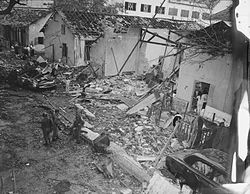

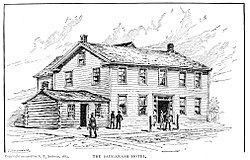


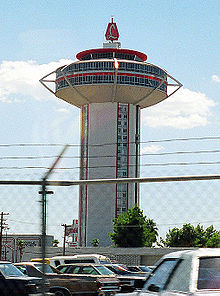
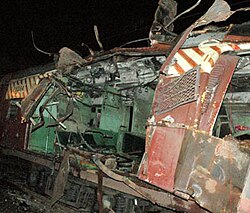


































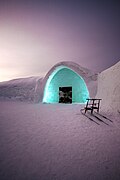





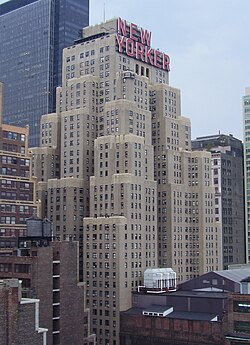

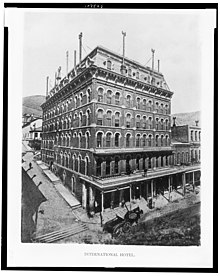

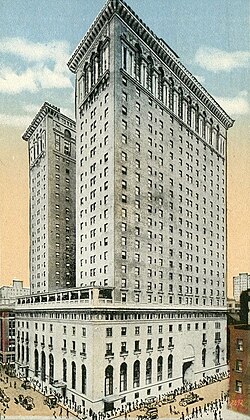













You must be logged in to post a comment.